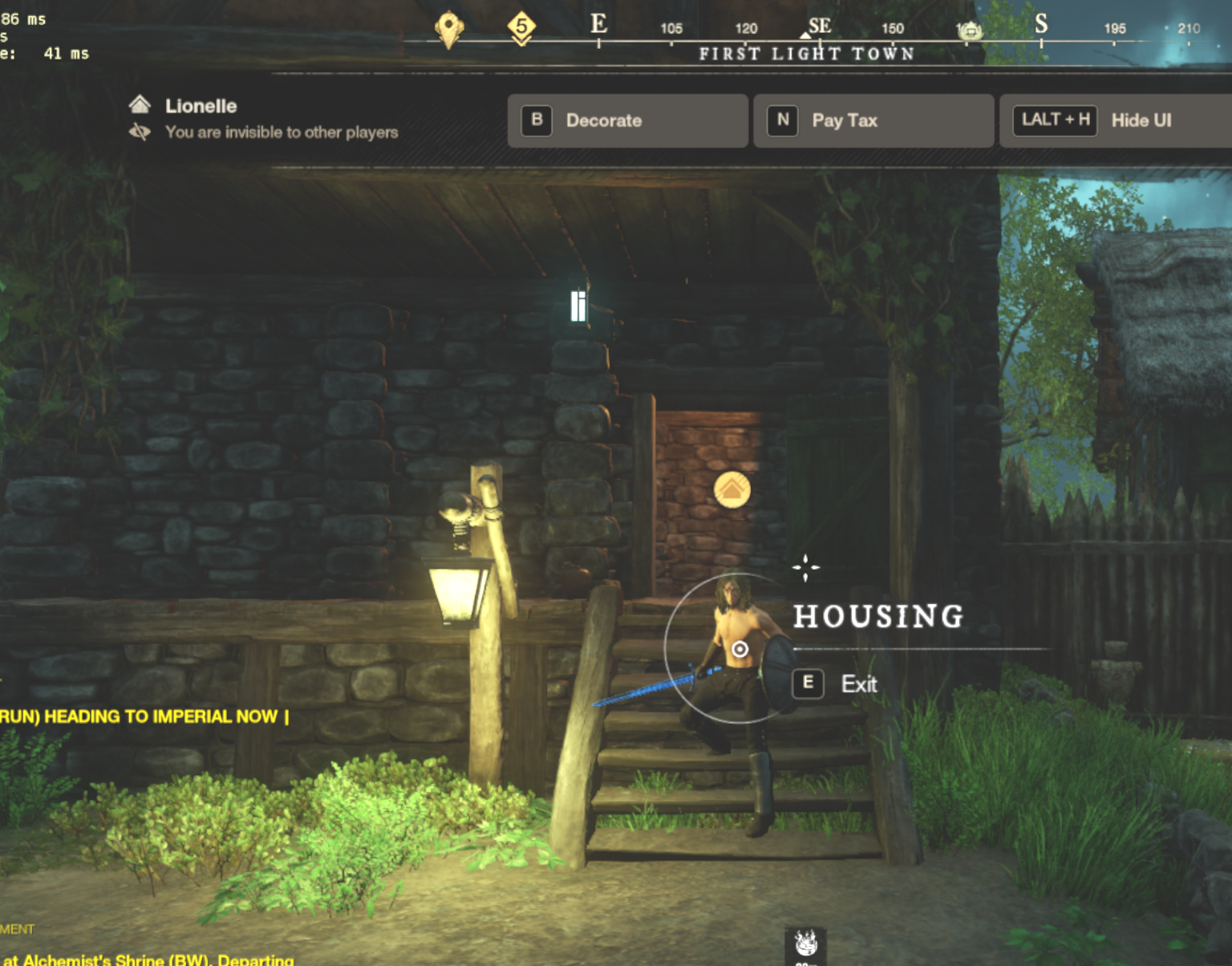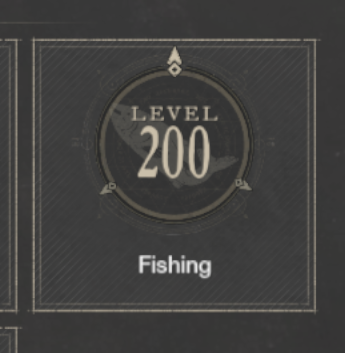Gone Fishing With Python 🐟
The Problem
Recently Amazon Game Studios released New World, an open-world MMO game. Now I haven't ever gotten into an MMO, but this one seemed to be different. And with the backing of the bottomless funding that is Amazon I figured I'd give it a shot. However... after playing this game for a while, the one word I would describe it as is grindy. To buy a home costs an insane amount of gold and saving up from completing the mainline story just was not going to cut it. So I started a side hustle in the form of salmon fishing.
See, players looking to advance in the game fast tend to complete side missions posted on the town board. And a lot of these missions require you to turn in X amount of Salmon. However, like most things in this game (and probably most MMOs to be fair) it is griiinnddy.
So I figured there has to be a better way right? The mechanics of fishing aren't super complicated and if I could just let my character fish all day and collect me hundreds of salmon among other treasures of the sea, I could finally buy my house.
Requirements
As I said above, fishing in New World is not a complicated task. Essentially all one needs is a fishing rod as bait is optional, and a source of water.
Casting the rod works by holding down the left mouse button while looking at a water source and releasing once a small indicator hits the top of the bar for a maximum cast.
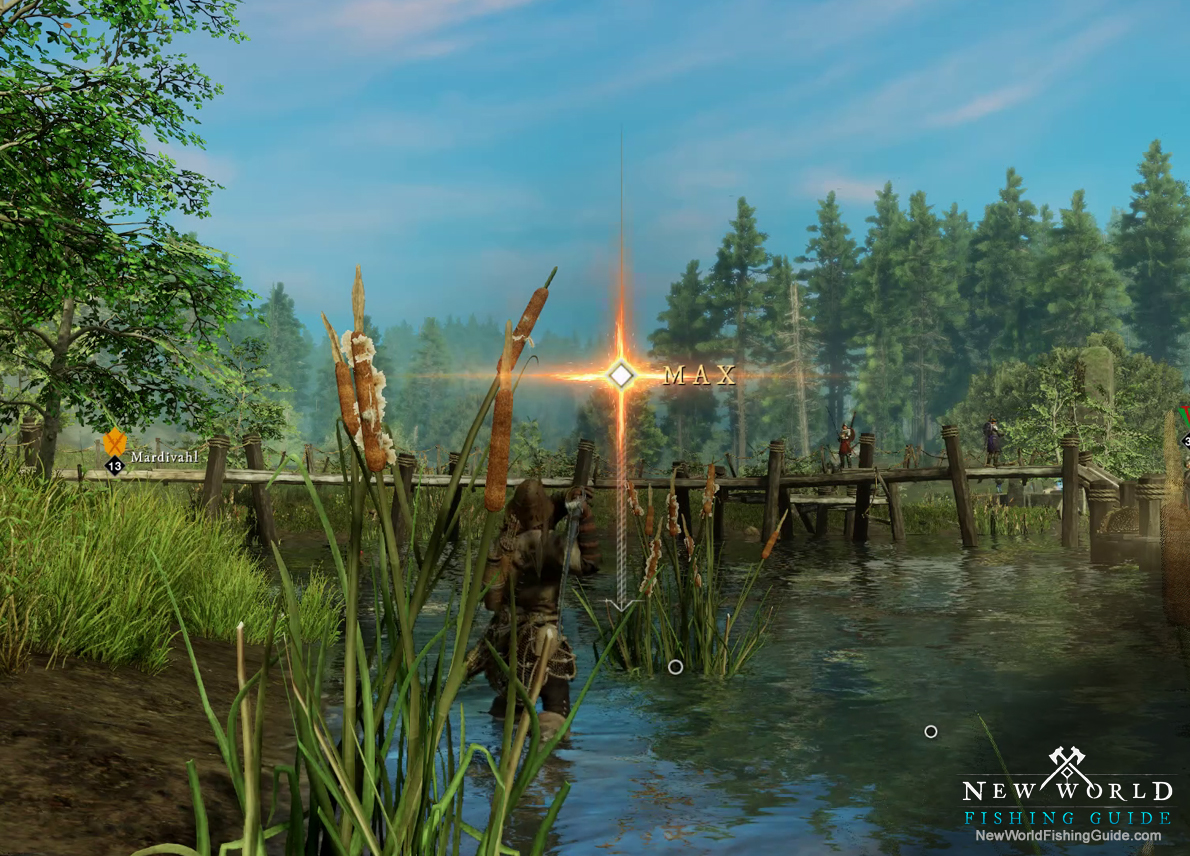
Then you know when to hook the fish when a little fish icon pops up. You must left click before this goes away or else you'll lose it.
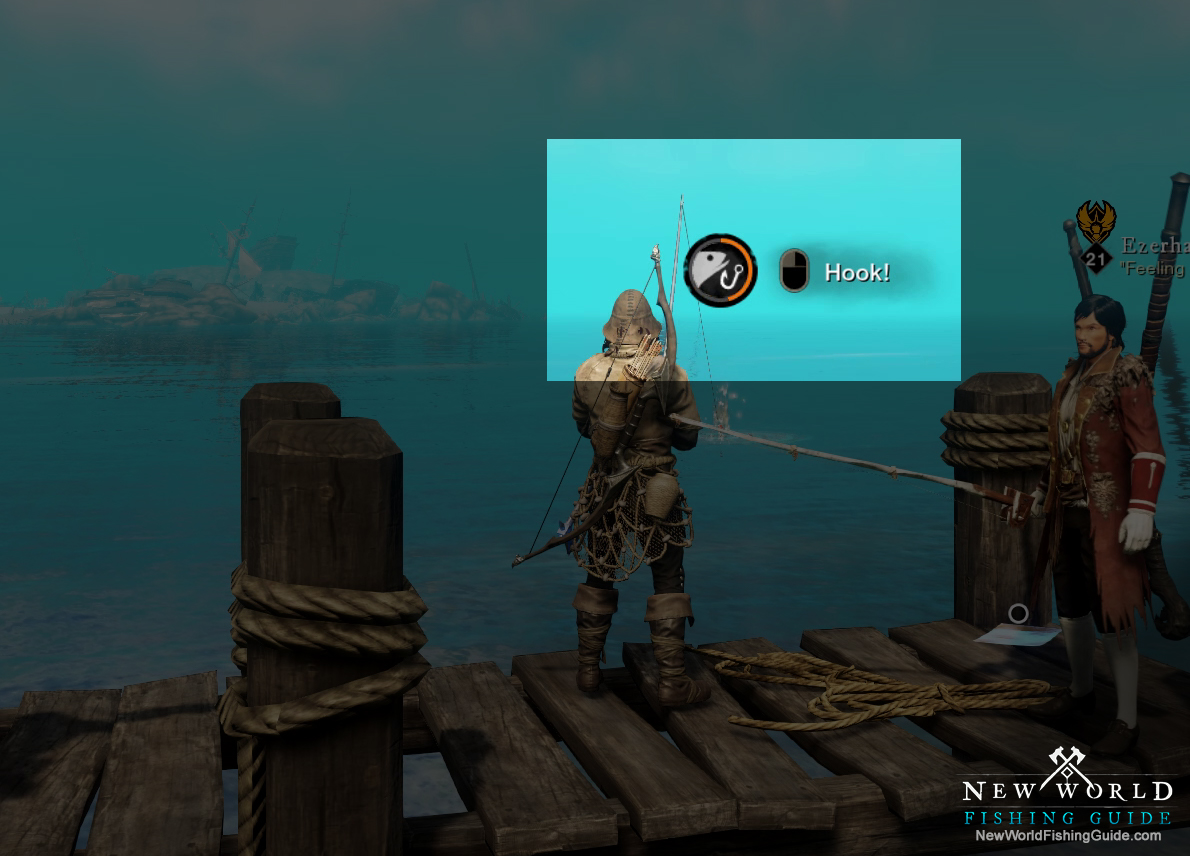
After that, it drops you into the line tension minigame. If you let off the line for too long, you make no progress and lose the fish, if you get risky and max out the tension, you'll break the line and also lose the fish.
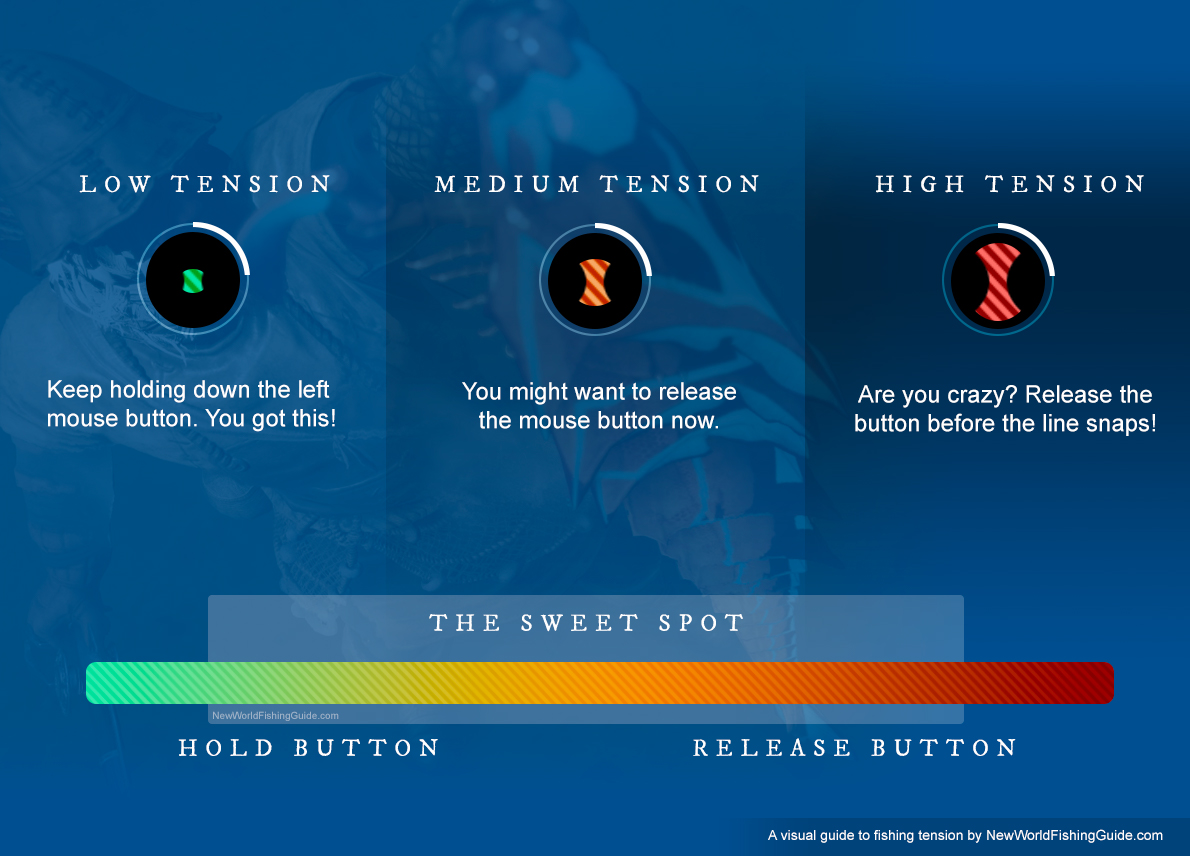
So our automation will have to do several things
- Recast the line, preferably with a maximum cast distance after the initial cast (which will be when we start the script).
- Hook the fish as soon as the visual indicator pops up
- Play the tension minigame, keeping the fish on the line while also not letting the line break
- Recast the line after we successfully catch the fish
- Fishing rods unfortunately break but are cheap (free for the basic rod) to repair, so having the bot be able to repair the rod when needed would be a nice addition as it would let you set and forget for longer periods of time
Getting Started
Libraries
Let's go ahead and install and import a few libraries that our script will use
pip install pyautogui pip install opencv-python
import time
import pyautogui
The main one here we will be using is pyautogui which allows our script to use the mouse and keyboard.
Let's do it
Since we are manually casting the first line, we should worry about
hooking that first fish. As stated, we know when to hook the fish
by the pop up of the fish icon (this guy  ). So let's take a small snippet from
our game so the bot knows what to look for and save that in the same folder as our script.
). So let's take a small snippet from
our game so the bot knows what to look for and save that in the same folder as our script.
starttime = time.time()
reelTicks = 0
checkTicks = 0
while True:
startButton = pyautogui.locateOnScreen('fishy.png', confidence = 0.7)
Here we are using pyautogui's locateOnScreen function, which searches the screen for the desired image and either returns the coordinates of the image or None if no image is found.
EDIT: as of v0.9.41, locate functions now give a ImageNotFoundException instead of None
Note the confidence level (why we need OpenCV), this is optional but after tinkering with it for a bit it helps in our case due to small differences in the pixels cause by game lighting, area filters, etc.
We're going to be checking for the fish indicator (startButton) in a loop, so we'll write our cases to check each time it does so.
We'll start with our recasting case, if something interrupted the fishing. This will wait 200 checks and re cast the line if it gets that far.
if startButton == None:
checkTicks = checkTicks + 1
if checkTicks > 200:
print("something is fishy.... recasting")
pyautogui.mouseDown()
time.sleep(1.9)
pyautogui.mouseUp()
checkTicks = 0
print("no fish waiting ", 200 - checkTicks)
Next, we have our case for if the fish indicator was found. If we find coordinates for startButton, the bot will reset the check ticks and left-click to hook the fish.
if startButton != None:
print("FISH!!!!!!!!!!!!")
checkTicks = 0
pyautogui.click()
Now that we have successfully hooked our fish we'll want to drop into another loop to handle the tension minigame.
So let's check the screen for the meter at a reasonably safe level to hold down the reel in button for a while. 
while True:
meter = pyautogui.locateOnScreen('meter.png', confidence = 0.7))
First case is if we see the tension meter. We'll reset the reelTicks and hold down the reel for a second then continue the loop.
if meter != None:
print("REEEEEEEL!!!!")
reelTicks = 0
pyautogui.mouseDown()
time.sleep(1)
pyautogui.mouseUp()
The next case will be if we don't see the tension meter.
if meter == None:
print("Hold Reeling In")
checkTicks = checkTicks + 1
After some testing, even with the largest fish with the line still cast, the tension meter will never go passed 35 checks without the tension meter going down to our safe zone. And when it does, two things could have happened.
- We successfully caught the fish and are now standing by to cast another line
or
- We successfully caught a fish but since durability of a pole drops on a successful catch the rod is now broken and we cannot recast
So let's check for our fishing pole's durability when the reelTicks goes above 35.

if reelTicks > 35:
fishingpole_durability = pyautogui.locateOnScreen('rod.png', confidence = 0.5)
With that information, we can add the case for our pole being fine. We'll want to recast in this case so we'll hold the left-click for around 1.9 seconds (a max cast).
if fishingpole_durability != None:
print("Fish caught!! Recasting!!")
pyautogui.mouseDown()
time.sleep(1.9)
pyautogui.mouseUp()
reelTicks = 0
break
And the case for our pole needing repair.
The repair process is.
- Tab to open inventory, takes a second to load.
- Clicking your broken rod
- Clicking the repair button
- Confirming the repair
if fishingpole_durability == None:
print("Pole broken: Attempting repair")
pyautogui.press('tab')
time.sleep(2)
print("Opened Inventory")
We'll check for the broken rod and click it once we find it.

while True:
broken_rod = pyautogui.locateOnScreen('broken_rod.png', confidence = 0.7)
print ("checking for broken rod..")
if broken_rod != None:
print ("broken rod found")
pyautogui.moveTo(broken_rod)
pyautogui.click()
break
Then look for the repair button.

while True:
repair_button = pyautogui.locateOnScreen('repair-button.png', confidence = 0.7)
print ("checking for repair button..")
if repair_button != None:
print ("button found")
break
Finally, finding the confirm button clicking it and recasting.

pyautogui.moveTo(repair_button)
pyautogui.click()
print("Clicked broken rod for repair")
while True:
confirm = pyautogui.locateOnScreen('confirm.png', confidence = 0.7)
print ("checking for confirm button")
if confirm != None:
print("confirm found")
pyautogui.moveTo(confirm)
pyautogui.click()
break
pyautogui.press('tab')
print("Pole fixed - Recasting")
pyautogui.press('f3') # pull out newly repaired fishing rod
pyautogui.mouseDown()
time.sleep(1.9)
pyautogui.mouseUp()
reelTicks = 0
break
And that's it, I have tested this extensively, even leaving the bot to fish for over 8 hours successfully. The only issue I had was my inventory filling up after a few hours and having to dump some of my catches to even be able to walk.
Closing Thoughts
All in all this was a really fun project. I know it kind of defeats the purpose of a game if I just build automation for it, but that is the fun part for me. At the end of the day, I had way more fun tinkering with this fishing bot as well as other minor automation than I ever did playing the game itself. I do not mean that as an insult to New World as a game, I think it just goes to show MMOs are not for me.
The guide above was a very rough implementation of my unique use case for fishing, you may want to automate adding bait or fishing in hot spots so I have cleaned up and uploaded the source here. Happy Fishing!
Also, if you're wondering if I ever got my house...
